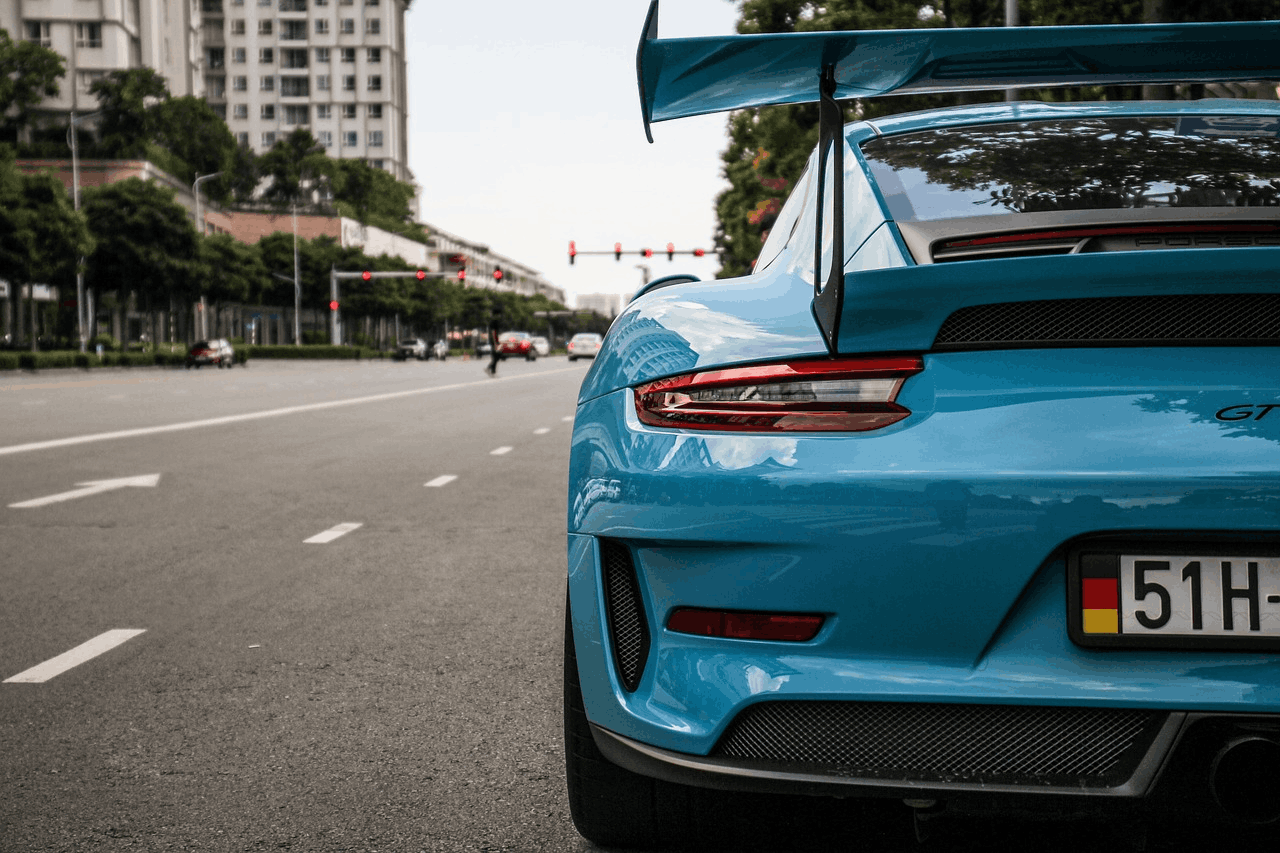Tail Light Fogging or Water Ingress? Unveiling the Truth Behind Tail Light Condensation|BLIAUTO Professional Analysis
Bliauto unveils causes of taillight condensation and water ingress, offering professional analysis and fixes. Essential insights for brand manufacturers of tail lights and manufacturing tail lights to improve sealing, design, and QC.
- I. Introduction: Why Are More Drivers Noticing “Foggy” Tail Lights?
- II. Fogging ≠ Water Ingress: Understanding the Difference
- III. Why Does Fogging Occur?—The Physics Behind It
- 1. Tail lights are not completely sealed
- 2. Condensation from temperature changes
- 3. The effect of LED heat characteristics
- IV. Real Causes of Tail Light Water Ingress
- V. How to Tell If It’s Fogging or Water Ingress
- VI. How to Deal with Taillight Fogging—Scientific Methods
- VII. How to Fix Water Ingress—Repair and Prevention Steps
- VIII. Preventing Future Fogging or Water Ingress
- IX. Common Myths About Tail Light Fogging
- X. Q&A Section | BLIAUTO Expert Answers
- XI. BLIAUTO Professional Advice: Knowledge Before Panic
- XII. Conclusion: When the Fog Clears, We See the Light’s Meaning
I. Introduction: Why Are More Drivers Noticing “Foggy” Tail Lights?
Many car owners have experienced this: after a car wash, a heavy rain, or a cold morning start, a layer of white mist suddenly appears inside the taillight lens, and sometimes even small water droplets form on the inner surface.
Then come the questions:
“Did my taillight get water inside?”
“Will it short-circuit?”
“Do I need to replace the taillight?”
In fact, condensation inside the taillight does not necessarily mean water ingress or poor quality. In most cases, it’s a normal physical phenomenon. However, if it happens frequently or doesn’t dissipate, it may indicate potential sealing issues.
Today, BLIAUTO will professionally explain the difference between fogging and water ingress, their causes, diagnosis methods, solutions, and prevention tips—to help you truly understand the truth behind taillight condensation.
II. Fogging ≠ Water Ingress: Understanding the Difference
| Item | Taillight Fogging | Tail Light Water Ingress |
|---|---|---|
| Definition | Light mist or condensation on the inner surface | Visible liquid water accumulating inside the lamp |
| Because | Humidity condenses due to temperature differences. | External water enters due to failed sealing |
| Appearance | Thin fog or fine droplets near the bottom/edges | Noticeable water droplets or puddles |
| Normal or Not | Usually normal | Abnormal, needs repair |
| Fix | Ventilation, drying | Check seals, replace gasket or lamp |
In short:
Fog comes from air humidity.
Water comes from leakage.

III. Why Does Fogging Occur?—The Physics Behind It
1. Tail lights are not completely sealed
Contrary to popular belief, taillights are not airtight.
They are designed with breather vents to balance internal and external air pressure, preventing lens deformation.
These vents allow air exchange but block liquid water through a filter membrane—meaning the lamp can “breathe,” but moisture may still enter under certain conditions.
2. Condensation from temperature changes
Air inside the lamp always contains some humidity. When the outside temperature drops suddenly (e.g., after washing, rain, or at night), the outer lens cools faster than the air inside.
The cooler surface causes water vapor to condense—just like fog forming on glasses or windows in winter.
3. The effect of LED heat characteristics
LEDs generate less heat than halogen bulbs, so they evaporate moisture more slowly.
When LEDs cool quickly after being turned off in humid weather, temporary condensation is more likely.
That’s why fogging is more common with LED tail lights, especially in cold or rainy seasons.
IV. Real Causes of Tail Light Water Ingress
If you see visible droplets or pooling water, the light has likely leaked. Common causes include:
Aged or deformed seals
Rubber gaskets between the taillight and the car body can lose elasticity over time or due to UV exposure, allowing water to seep in.
Cracked or damaged housing
Even a small, invisible crack from a stone chip or impact can let high-pressure water in during washing or rain.
Failed adhesive joints
Over time, the glue sealing the lens to the base may deteriorate from heat or vibration, leading to leaks.
Improper modification or installation
Aftermarket upgrades, repainting, or LED retrofits often disturb the factory sealing if not properly reassembled—increasing the risk of leaks.

V. How to Tell If It’s Fogging or Water Ingress
✅ Method 1: Observe time changes
Fogging: Appears after washing/rain, disappears in a few hours.
Water ingress: Water remains or increases over time.
✅ Method 2: Observe distribution
Fogging: Even mist near lower edges or corners.
Water ingress: Large droplets, puddles, or uneven reflections.
✅ Method 3: Light test at night
Turn on the taillight—if you see distorted reflections, dark patches, or moving water shadows, it’s likely water ingress.
✅ Method 4: Shake test
Gently shake the light—if you hear water sloshing, there’s liquid inside.
VI. How to Deal with Taillight Fogging—Scientific Methods
If it’s only condensation, you can safely remove it using the following methods:
Natural drying
Park in a ventilated or sunny spot. Turning on the lights for a while can help warm the air inside.
Heat dissipation (light on)
Keep the taillights on for a few hours—gentle heat speeds up evaporation. Avoid prolonged operation to prevent lens aging.
Use desiccants
Remove the lamp and place small silica gel packs inside. Useful in cold or humid climates.
Low-heat air drying
Use a hair dryer on low heat, blowing gently from the vent area. Avoid direct high heat to prevent deformation.

VII. How to Fix Water Ingress—Repair and Prevention Steps
If water is confirmed inside the taillight, follow these steps immediately:
Drain and dry
Remove the taillight, tilt to drain water, and dry with compressed air or low-temperature air for at least 24 hours.
Inspect all sealing points
Check:
Lens joints
Bulb sockets
Wiring holes
Mounting screw areas
Replace any cracked or aged seals.
Reapply sealing compound
Use automotive-grade waterproof sealant to reseal minor cracks or open joints. Allow 24 hours for curing.
Replace the assembly if necessary
If the housing, reflector, or circuitry is damaged, replacing the entire unit is safer and often cost-effective.
VIII. Preventing Future Fogging or Water Ingress
✅ 1. Avoid high-pressure washing directly at light edges
Keep the nozzle away from lens seams or vent holes.
✅ 2. Check gaskets regularly
Inspect rubber seals annually; replace if hardened or loose.
✅ 3. Install correctly after modifications
Ensure all seals are properly reseated; test with light water spray afterward.
✅ 4. Choose high-quality lights
Premium lights (like BLIAUTO models) undergo IP67 waterproof and thermal cycling tests, ensuring long-term durability.
✅ 5. Keep ventilation and warmth
In humid or cold weather, turning on lights briefly helps keep the inside dry.

IX. Common Myths About Tail Light Fogging
❌ Myth 1: Fogging = Poor quality
Even OEM lights from brands like Mercedes, Toyota, and Ford can fog temporarily—it’s normal physics.
❌ Myth 2: Must disassemble to fix
Usually unnecessary; the lamp’s vent system will clear the fog naturally. Unnecessary disassembly risks seal damage.
❌ Myth 3: Seal all vents
Never block the vent holes! They’re essential for pressure balance—sealing them can cause severe deformation or cracking.
X. Q&A Section | BLIAUTO Expert Answers
Q1: My taillight fogs up right after washing—is that normal?
A: Yes. The sudden temperature drop causes moisture to condense; it usually disappears within a few hours.
Q2: Does fogging affect safety or lifespan?
A: Light fog has no impact. But long-term water or corrosion on reflectors needs attention.
Q3: Are LED tail lights more prone to fogging?
A: Slightly. LEDs produce less heat, so moisture evaporates slower.
Q4: Can I use moisture-absorbing packs inside the light?
A: Yes, but ensure they don’t touch electrical parts and replace them regularly.
Q5: My light keeps leaking even after repair—what now?
A: Structural cracks or invisible micro-leaks may exist. Replacing the entire assembly is the best solution.
Q6: Can I use tape to temporarily seal cracks?
A: Only for short-term emergency use. Tape deteriorates quickly and should not be a permanent fix.
XI. BLIAUTO Professional Advice: Knowledge Before Panic
From this discussion, we can conclude:
Fogging is normal, not a defect.
Water ingress is the real issue to fix.
Proper diagnosis and maintenance greatly extend light lifespan and safety.
BLIAUTO’s philosophy:
“Professional knowledge and precision engineering—protecting the light that keeps you safe.”
Our taillight designs feature enhanced sealing systems, optimized venting structures, and high-grade waterproof gaskets—ensuring clarity and reliability in all weather.
If you ever encounter condensation or leakage, BLIAUTO’s technical team is ready to assist with professional inspection and solutions.
XII. Conclusion: When the Fog Clears, We See the Light’s Meaning
Tail light fogging isn’t something to fear. What matters is understanding, identifying, and addressing it correctly.
When the mist fades and the light shines clearly again, that glow symbolizes trust, safety, and the engineering precision BLIAUTO stands for.
BLIAUTO—Lighting Done Right. Drive with Confidence.
Learn more about our automotive lighting products.

Bliauto Motorcycle Headlight - Model C1H-WA: High-quality LED design from leading brand manufacturers of motorcycle headlights. Precision Manufacturing Motorcycle Headlight ensures high visibility, durability, and easy fit for all riders.

Bliauto Motorcycle Headlight - Model C1H-HL: High-quality brand motorcycle headlight with durable LEDs, easy installation, and high-beam performance. Trusted brand manufacturers motorcycle headlights for safety. Choose Manufacturing Motorcycle Headlight quality.

Bliauto JS1 Jump Starter – Reliable Power On-the-Go As a brand manufacturer & wholesale jump starter supplier, Bliauto delivers high-quality portable power solutions. The JS1 Jump Starter provides instant engine starts, USB charging, and durable performance—ideal for emergencies. Trusted by professionals, it’s compact, safe, and backed by expert engineering. Wholesale options are available—power up with Bliauto! Optimized for SEO with target keywords while maintaining clarity and brand authority. Let me know if you'd like refinements!

The Bliauto Jump Starter - Model JS2 delivers reliable power on demand. As leading brand manufacturers of jump starter specialists, we offer high-quality, durable units. Perfect for wholesale jump starter needs, our manufacturing jump starter ensures safety and efficiency in every use.
Connect with Bliauto for Automotive LED Lights Solution
Bliauto is dedicated to designing innovative automotive LED lighting systems. Let's talk about your needs!
© 2025 Bliauto All Rights Reserved.

Bliauto
Bliauto Light
Bliauto
Bliauto Light
Bliauto
Whatsapp: +8618811846160